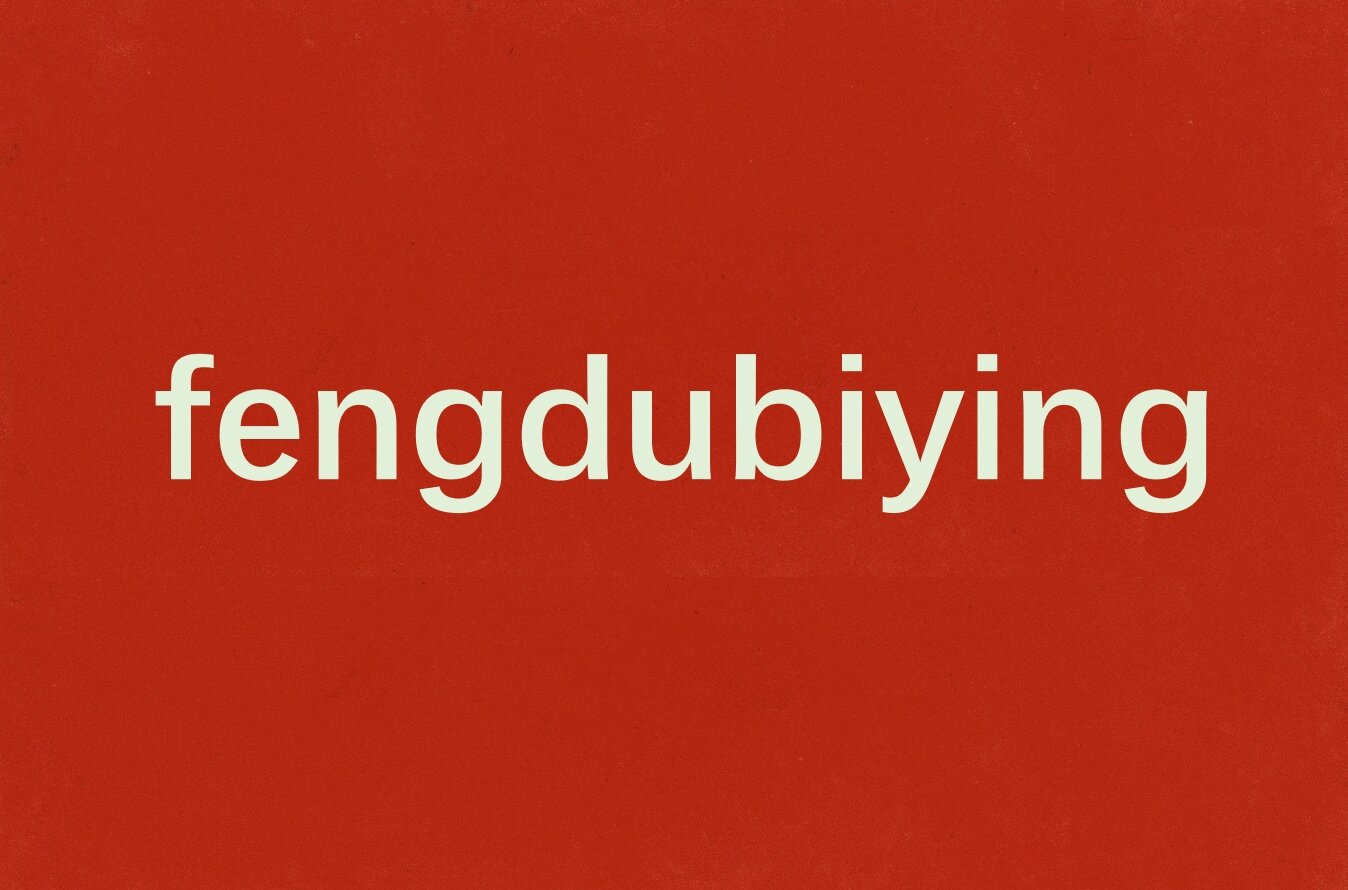Comparing the advantages and disadvantages of MakerDao and Liquity in the process of stablecoin lending in four aspects
Written by Footprint Analyst Simon (simon@footprint.network)
Date: November 2021
Data Sources:Footprint MakerDao VS Liquity Dashboard (https://footprint.cool/MDL)
Data Sources:public chain、borrow money、DEXpublic chainstable currencyborrow moneySECand currencies, etc., where
occupy an important part. However, since August, discussions on the regulation of stablecoins have gradually increased, and even the U.S. Treasury, the Federal Reserve,
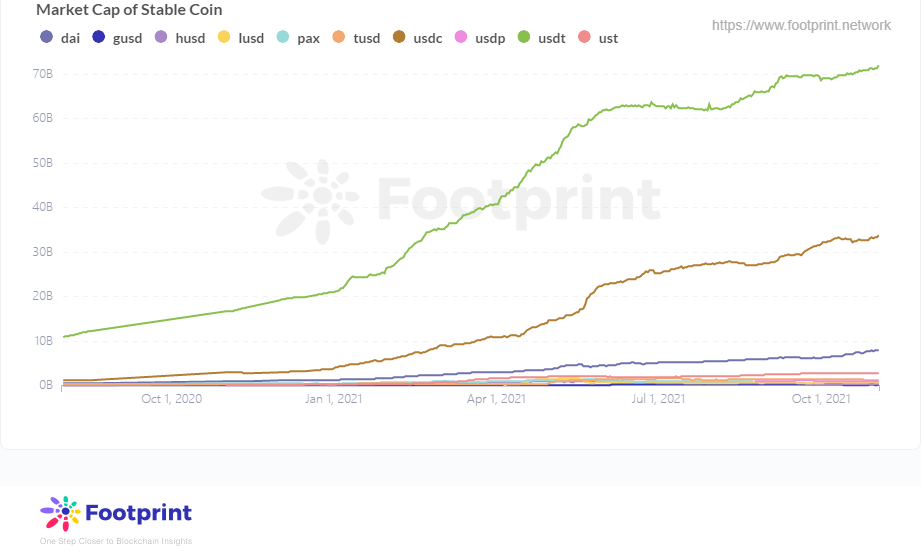
Many regulators, such as the United States, have targeted stablecoins.
It can be seen that starting from 2021, the market value of stablecoins has risen rapidly taking advantage of the prosperity of DeFi, and more and more stablecoins have been involved in DeFi. However, people are quite critical of the centralized stablecoins led by USDT and USTC, and whether stablecoins that rely on centralized institutions are contrary to decentralization.
image description
Stablecoin market cap (since August 2020) Data source: Footprint Analytics
Time quickly came to 2021, and the same over-collateralized stablecoin LUSD also questioned the centralization of stablecoins, saying that most stablecoins are centralized stablecoins formed by fiat currency collateral, and it is necessary to create a stablecoin that maintains decentralization Protocol Liquity.
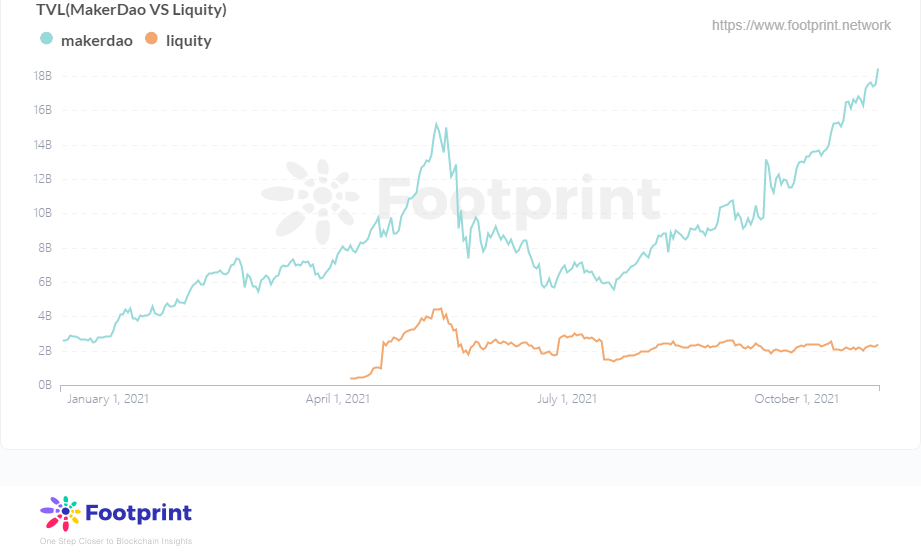
MarkerDao and Liquidity, which are also minted through lending agreements to form stablecoins, are often compared together.
image description
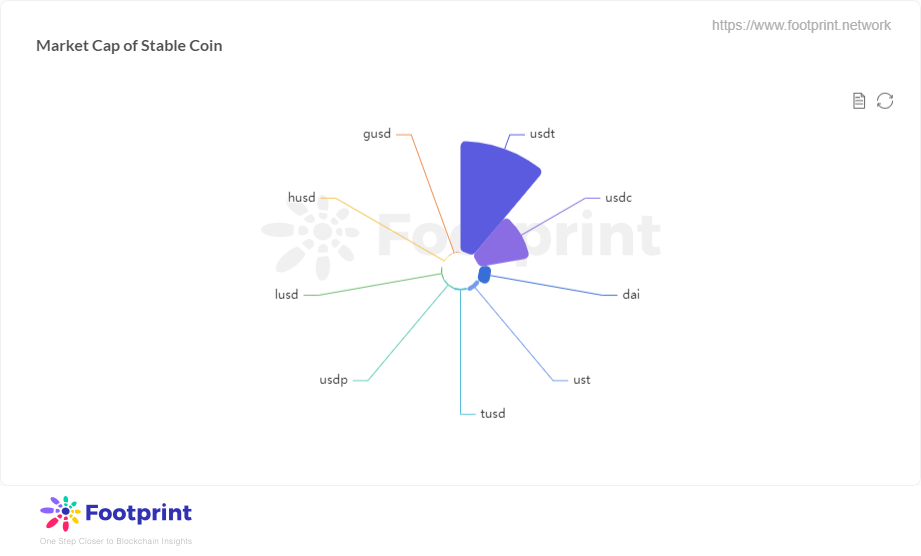
MakerDao and LiquityTVL (since 2021) Source: Footprint Analytics
image description
However, as a latecomer to the over-collateralized stablecoin market, Liquity naturally has to learn from the past. Many mechanisms of Liquity are set up for the pain points of MarkerDao. Footprint Analytics has published in "Can Liquity's mechanism really come from behind? "The characteristics of Liquity are analyzed. This article will mainly compare Liquity and MakerDao from four aspects: 1) lending process, 2) stable currency mechanism, 3) token model, and 4) liquidation mechanism.
Pawn
secondary title
Comparison 1: Borrowing process
Pawn
The first step for users to borrow money is to mortgage assets. Compared with Liquity, which can only mortgage ETH, MakerDao allows multiple collaterals. Currently MakerDao also supports centralized stablecoins such as USDC, USDT, and TUSD, platform tokens such as LINK, YFI, COMP, and Uniswap’s LP token.
Liquity believes that LUSD as a decentralized stable currency, with ETH as collateral is the real decentralization. And such as USDT is behind a centralized organization, and the stable currency produced by it is actually still centralized.
MakerDao only supported ETH as collateral before March 2020, but the sharp drop in the price of ETH in March 2020 accelerated MakerDao's decision to support multiple collaterals, and the opening of USDC at a time of crisis allowed DAI to recover fluidity.
Multi-collateral is a double-edged sword. On the one hand, stable coins such as USDT can disperse platform risks and adjust the supply and demand of DAI. On the other hand, stablecoins that use USDT as collateral also have many risks, such as being sued by the SEC or insufficient reserve supervision. At the same time, the rise and fall of other platform tokens are also highly correlated with the rise and fall of ETH.
Interest and Minimum Mortgage Rates

MakerDao charges a fixed interest (Stability Fee) when borrowing, and the rate will vary according to different assets and different minimum mortgage rates.
For example, ETH has 3 pools, the minimum mortgage rates are 130%, 145%, and 170% from low to high, and the corresponding fixed interest rates are 5%, 2%, and 0.5%. Except for some stablecoins and LP Token, which have a lower minimum mortgage rate, the minimum mortgage rate of other token pools is above 130%. The higher the mortgage rate, the lower the utilization rate of funds.
Data source: https://oasis.app/
For users in Liquity, the minimum mortgage rate is only 110%, and there is no borrowing rate that increases over time. Although Liquity still has a borrowing fee of 0.5%-5%, this fee is a one-time fee that will not increase over time. This makes Liquity's users more inclined to borrow for a long time and not eager to repay, thus helping Liquity's TVL to remain relatively stable. And users who hold LUSD will also hold it for a long time, thereby increasing the supply of LUSD.
While MakerDao users look at the daily increasing repayable expenses, they need to constantly remind themselves to find investment channels with higher interest rates to cover the borrowing expenses, otherwise he needs to repay the loan as soon as possible to stop the continuous interest accrual of the loan.
secondary title
Contrast 2: Stablecoin Uses
The MakerDao platform itself supports that Dai holders can earn Dai savings interest (Dai Saving Rate, DSR for short) by depositing it in a savings account. When DSR rises, it will stimulate more holders to deposit DAI, increasing the demand for DAI.
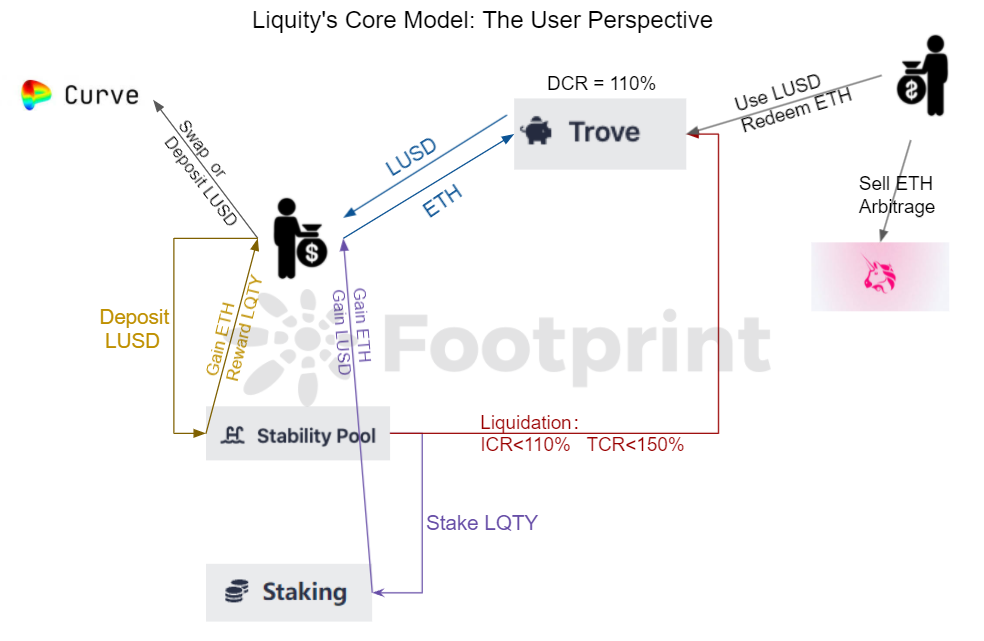
MakerDao regulates the supply and demand of DAI through fixed interest (Stability Fee) and deposit interest (DSR), but these adjustments are based on the judgment of MakerDAO members, and it returns to the question of whether MakerDao is sufficiently decentralized.
image description
Liquity core pattern Image source: Footprint Analytics
From an external use case standpoint, there are numerous protocols that currently support DAI. However, more than 60% of LUSD holders are always in Liquity's stable pool, and have not actually left the Liquity platform itself. Although the proportion of LUSD in Curve, SushiSwap, and OlympusDao is increasing, it is still a long way from DAI.
secondary title
The platform tokens of MakerDao and Liquity are distributed as MKR and LQTY. The main difference between the two lies in the circulation and usage.
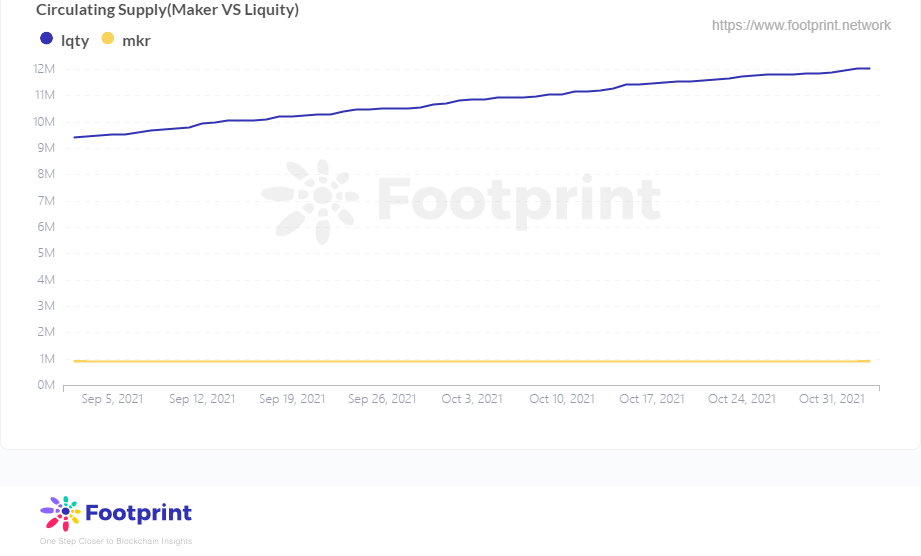
From the perspective of token issuance, there is no fixed amount of MKR supply, which mainly depends on the debt situation of the entire MarkerDao. For example, when the global cryptocurrency market plummeted in March 2020, MakerDao’s collateral ETH experienced a gap of US$5.3 million. MakerDao replenished DAI by issuing and auctioning newly minted MKR, thereby repaying the bad debts incurred by destroying DAI. Conversely, when the surplus of the protocol exceeds a certain threshold, MKR will be destroyed.
And LQTY will not participate in the liquidation of debts, and its supply is only 100 million. The main source of LQTY is rewards for investing LUSD in its stable pool. Users can also pledge the obtained LQTY to share the borrowing and redemption fees of other users. LQTY is mainly used to encourage users to put the lent LUSD into its stable pool to improve the liquidation mechanism, which also explains why more than 60% of LUSD is still in Liquity's own system.
Token circulation (since September 2021) Data source: Footprint Analytics
From the perspective of token usage, MKR is a governance token, and MKR can be used to control protocol parameters (such as stability fees, debt ceiling, minimum mortgage ratio) and important ecosystem things (such as funding working groups, grants, etc.) vote. However, most of MKR is held by early investors and large investors, which makes MakerDao fall into the vortex of centralization.
LQTY is not a governance token, its use case is only to help holders capture income, so it can be seen from the price of the two currencies that the difference is as much as 400 times. The circulating supply of the token LQTY is still rising steadily before it is fully released, while the circulating supply of MKR will basically remain stable when the market is stable.
secondary title
Comparison 4: Liquidation Mechanism
The liquidation mechanism is the core of the stability of any lending system. There are obvious differences between the liquidation mechanisms of MakerDao and Liquity.
After experiencing the test in March 2020, MakerDao has improved the liquidation mechanism, switching from the original English auction mode to the Dutch auction mode with the initial asking price ranging from high to low, but it is still an auction mode, and the time limit needs to be 6 hours. And MakerDao needs enough users who hold DAI to actively participate in the liquidation. Although MakerDao has strengthened the regulation of DAI circulation by introducing stablecoin mortgages and issuing MRK.
This model is profitable for both the liquidation initiator and the liquidator holding LUSD in the stable pool, and there is no need to wait for 6 hours for the liquidation to occur, and it will be executed immediately once the collateralization rate of 110% is reached.
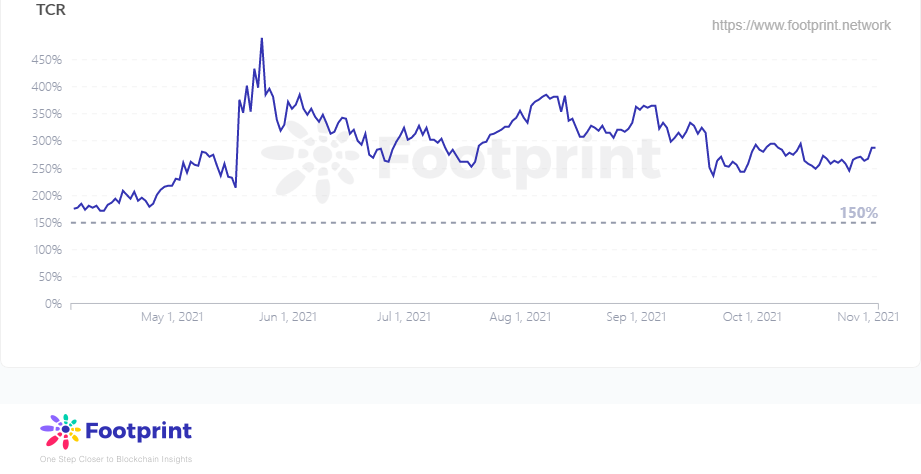
image description
in conclusion
secondary title
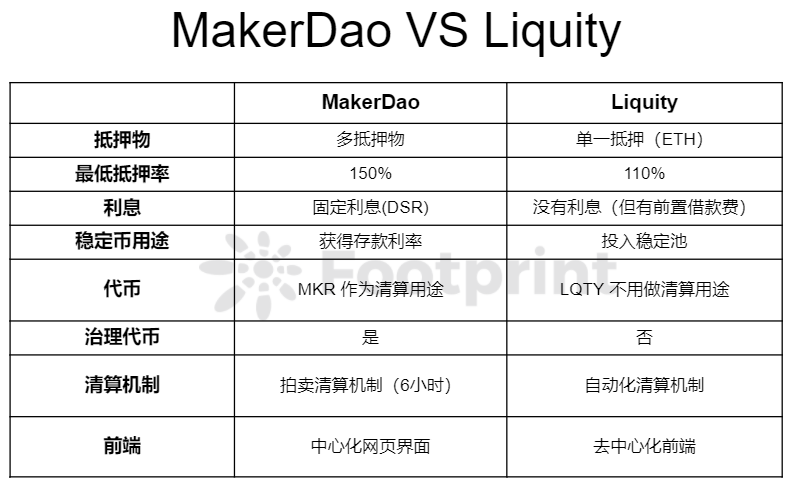
in conclusion
Footprint's comparison of the differences between these two protocols is summarized as follows:
image description
About Footprint Analytics:
The above content is only a personal opinion, for reference and communication only, and does not constitute investment advice. If there are obvious understanding or data errors, feedback is welcome.
About Footprint Analytics:
Footprint Analytics is a one-stop visual blockchain data analysis platform. Footprint assisted in solving the problem of data cleaning and integration on the chain, allowing users to enjoy a zero-threshold blockchain data analysis experience for free. Provide more than a thousand tabulation templates and a drag-and-drop drawing experience, anyone can create their own personalized data chart within 10 seconds, easily gain insight into the data on the chain, and understand the story behind the data.
Footprint Analytics official website: https://www.footprint.network/
Discord community: https://discord.gg/3HYaR6USM7



